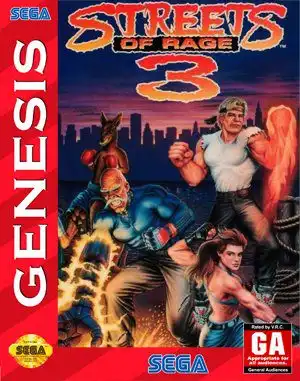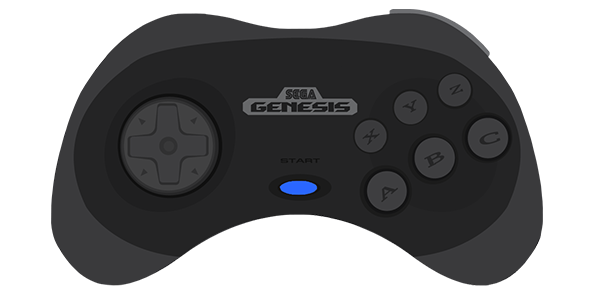Streets of Rage 3: The Controversial Sequel We Still Love
After the near-perfect Streets of Rage 2 cemented its place in the beat 'em up hall of fame, fans eagerly awaited the next chapter. When Streets of Rage 3 finally landed on the Sega Genesis/Mega Drive, it arrived not with universal acclaim, but with a mix of excitement and head-scratching confusion. It was different. Really different.
While Streets of Rage 4 has brought the series roaring back into the modern era with critical success, it's worth looking back at its predecessor, Streets of Rage 3. This game stands out in the original trilogy, often considered the black sheep, yet it introduced bold ideas and remains a fascinating entry for anyone who grew up with it or is exploring the series' history.
The Black Sheep? Contrasting SoR3 with SoR2
Let's be honest, Streets of Rage 2 is widely regarded as the pinnacle of the original trilogy. Its tight controls, balanced gameplay, incredible soundtrack, and polished presentation made it an instant classic. Streets of Rage 3 had a tough act to follow, and it chose to innovate rather than iterate closely.
This innovation led to division among fans. Some welcomed the changes, while others felt it lost some of the raw, satisfying impact of its predecessor. The pacing felt faster, the music was experimental, and the overall difficulty seemed... uneven. It wasn't just SoR2 with new levels and characters; it was a fundamental shift.
What Made Streets of Rage 3 Different?
So, what exactly changed? Streets of Rage 3 wasn't afraid to mess with the formula.
- New Moves: Characters gained a sprint (double-tap forward) and a roll (pressing jump while sprinting). This drastically changed movement and combat flow, allowing for quicker positioning but sometimes feeling less deliberate than SoR2's movement.
- Special Attacks & Meter: The dedicated special attack button returned, but performing the basic special consumed a meter that refilled over time. This encouraged using specials more freely than in SoR2, where they cost health. Offensive specials (forward + special) still cost a small bit of health, offering a risk/reward.
- Character Tweaks: Returning characters like Axel, Blaze, and Skate had new moves and animations. Axel's "Grand Upper" became a charge move, which felt less intuitive to some.
- Weapon Durability & Special Moves: Weapons now had limited uses before breaking. Crucially, characters could perform a special attack with a weapon, adding another layer to combat strategy.
- Alternate Endings & Paths: The game featured multiple endings based on completing specific objectives and defeating certain bosses within time limits. This added replayability but could also lead to frustrating failed runs.
- Interacting Environments: Some stages included elements you could interact with, like breakable walls or platforms.
These changes aimed to deepen the combat system, but the execution sometimes felt less refined than SoR2's streamlined perfection.
The Characters
Alongside returning heroes Axel Stone, Blaze Fielding, and Skate (Eddie "Skate" Hunter), Streets of Rage 3 introduced a couple of memorable new faces:
- Dr. Zan: A cybernetic character with electric attacks, replacing Max Thunder. His reach and charge moves offered a unique playstyle.
- Shiva: The formidable sub-boss from SoR2 became a playable character! Unlocking him required defeating him under specific conditions. Shiva's martial arts prowess made him a fan-favorite unlockable.
- Ash (Bare Knuckle 3 only): A flamboyant, controversial enemy character who was playable in the Japanese version but removed entirely from the Western releases.
Each character had their own distinct feel, encouraging players to experiment and find a favorite, though balancing felt a bit off compared to the previous game.
Story & Endings
Mr. X is back (or is he?), this time plotting to replace city officials with realistic robots and launching nuclear missiles. The plot in Streets of Rage 3 is a bit more complex than previous entries, tying into the multiple paths and endings. Depending on how quickly you progress and whether you meet certain conditions, you could get one of three different conclusions, adding stakes to each playthrough.
Bare Knuckle 3 vs. Streets of Rage 3: Regional Differences
Perhaps the most significant factor contributing to the Western perception of Streets of Rage 3 is how drastically it was altered from its Japanese counterpart, Bare Knuckle 3.
- Plot: The story was heavily rewritten, changing key motivations and character details. The robot plot was less prominent in BK3, and the nuclear threat was the primary focus.
- Difficulty: Bare Knuckle 3 is notoriously difficult from the start. Streets of Rage 3 significantly toned down the difficulty, making it easier to get through but perhaps less challenging for series veterans.
- Character Colors: Axel, Blaze, and Skate had different default color palettes.
- Music: Several music tracks were changed or removed in SoR3, replaced by more experimental, sometimes jarring, compositions from Yuzo Koshiro using a new algorithmic composition method. This is one of the most debated aspects.
- Ash: As mentioned, the playable enemy Ash was removed from SoR3 due to perceived controversy.
- Character Voices: Some voice samples were changed.
These changes, particularly to the difficulty and music, fundamentally altered the experience for Western players compared to those who played the original Japanese version.
Where Can You Play Streets of Rage 3 Today?
If you want to revisit or experience Streets of Rage 3 for the first time, you have options:
- Collections: It's included in many modern Sega Genesis/Mega Drive collections available on PC (like the one on GOG or Steam) and current consoles. These often include both the US and Japanese versions, allowing you to compare!
- Emulation: Playing via emulators is another popular method for retro enthusiasts, though legality varies depending on region and ownership of the original game.
- Sega Forever: The mobile collection sometimes features Sega classics, though availability can change.
Playing it now, often alongside Bare Knuckle 3, provides a fascinating look at localization choices and game design philosophy.
Conclusion
Streets of Rage 3 might not have reached the legendary status of its immediate predecessor, but it's far from a bad game. It was an ambitious attempt to evolve the series, introducing mechanics that would even influence Streets of Rage 4. Its unique feel, multiple endings, and the stark differences between its regional versions make it a compelling, if sometimes frustrating, piece of beat 'em up history. It's a game that sparks debate, fuels nostalgia, and absolutely deserves to be played and appreciated for what it tried to be.
FAQ
Q: Is Streets of Rage 3 available on modern consoles? A: Yes, Streets of Rage 3 is included in several Sega Genesis/Mega Drive collections available on PC (Steam, GOG), PlayStation, Xbox, and Nintendo Switch.
Q: What are the main differences between Streets of Rage 3 (US) and Bare Knuckle 3 (JP)? A: Key differences include a rewritten plot, significantly adjusted difficulty (SoR3 is easier), different music tracks, altered character colors, and the removal of the playable character Ash from SoR3.
Q: Why is Streets of Rage 3 considered controversial? A: It's often considered controversial compared to the beloved SoR2 due to its significant gameplay changes (sprint, roll, meter), experimental music, and the divisive regional alterations made for the Western release, which changed the game's tone and difficulty.
Q: Is Streets of Rage 3 included in Streets of Rage 4? A: No, Streets of Rage 4 is a new game and does not include the full original games. However, it does feature unlockable retro character sprites based on their appearances in the original trilogy, including SoR3.


